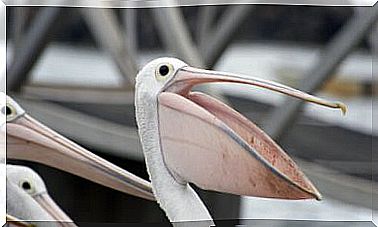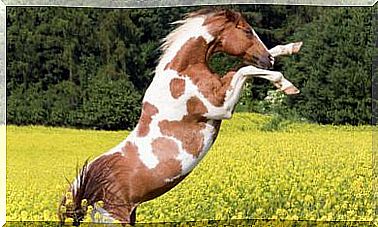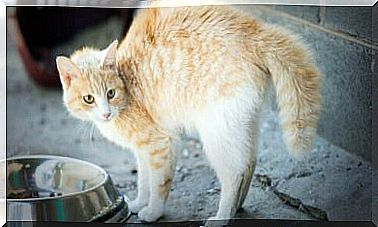The Protruding Ribs Salamander: Characteristics And Habitat
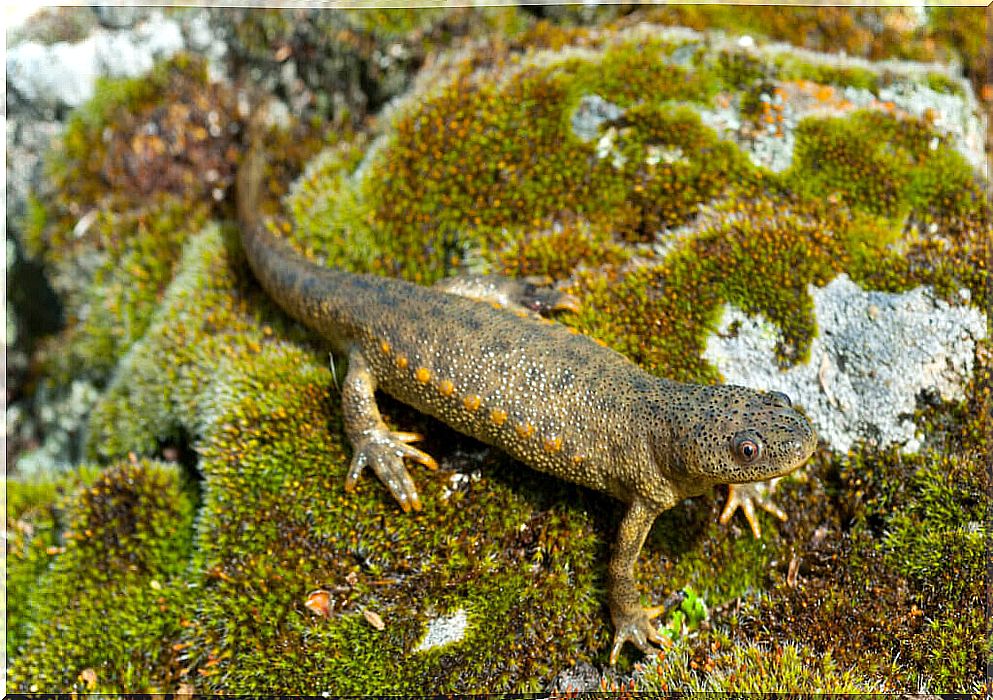
Relative to frogs and newts, the protruding ribs salamander ( Pleurodeles waltl ) is an elongated urodelus with a showy tail that lives in Mediterranean regions. It is one of the jewels of the Iberian Peninsula, as its large size and prehistoric appearance fascinate even the most skeptical.
This urodelo amphibian is able to live both in water and on land, which makes it an animal that adapts to any environment. Although it looks harmless, it even uses its bones to protect itself from any predators, as we’ll see in the following lines.
Virtually out of a movie, jutting-ribbed salamanders aren’t afraid to get hurt in order to survive. If you want to know more about them, what they are, how they live and what they do, read on.
Protruding Ribs Salamander: general information
Protruding-rib salamanders are classified as urodelos amphibians, organisms that tend to keep their skin moist for breathing. It is the largest amphibian in Europe, reaching 31 centimeters in length, a protruding tail and rough skin. Its head is broad with slightly bulging eyes.
Its body color is usually greenish-brown, with a yellow tinge along the belly. It has black spots on the back, and orange granulations on the flank. Its hind legs have 4 toes, one less than the front legs, which are more elongated and have 5 toes.
Males and females are necessarily different to improve their mating process. The male’s characteristics define his health and survivability, while in this way females select the most suitable males to reproduce.
On the other hand, when courtship and mating are over, the eggs that the female lays are quite small. When they hatch, the larvae are characterized by their large crests and highly developed gills.
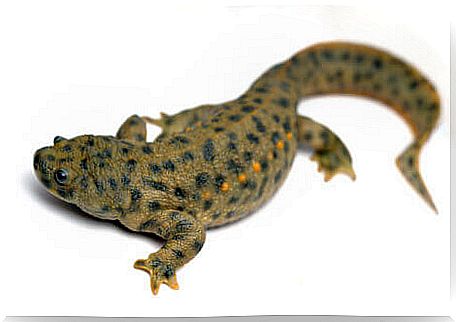
The life of the protruding ribs salamander
Protruding-rib salamanders usually inhabit temporary water areas, so they have two lives, one aquatic and one terrestrial. As long as the body of water exists, the protruding ribs salamander is completely aquatic and able to breathe in water.
As a salamander, this amphibian can withstand periods of drought by sheltering underground without major problems. Although it is also possible to find active specimens on very humid days. In this way, protruding rib salamanders survive without water and eagerly await the arrival of the rains.
On the other hand, when the rains return, the jutting-ribbed salamanders come out of their hiding places and it’s easy to see them swimming. As they feed on some crustaceans and small invertebrates at the bottom of the water body, they store energy. Its main intention is to start the mating ritual as soon as possible.
Reproduction and courtship
Once protruding-rib salamanders have access to a body of water, they attempt to initiate mating. Despite appearances, males actively strive to court the female, in a series of behavioral organizations distributed throughout the pond.
Males of this species court through the flick of the tail, and if the female accepts, the lucky suitor can fertilize her. This quick tail dance usually lasts a few minutes and ends with a hug or hug, a reproductive posture typical of amphibians.
The protruding-rib salamanders end up doing a kind of dance in which the male takes the female by the paws and lets her go several times. The entire ritual resembles a dance in which the female ends up laying eggs, hiding them until birth.
Habitat and distribution
The ribbed salamander is distributed mainly in the Mediterranean, which covers a large part of the Iberian Peninsula. In Portugal, it can be found in much of the country, except in the far north, while in Spain populations are observed in much of the center and south.
Although it is usually found in areas where there are static water bodies, this animal is also capable of living in rivers and streams. It is even so flexible that it survives in areas with human changes such as wells, swimming pools or reservoirs. It is generally found in humid, sub-humid and semiarid areas.
Although the ribbed salamander can survive drought by hiding in mud or moist soil, it is a species with Near Threatened (NT) status. Some of its main risks are the contamination of water bodies, deforestation and invasive species.
The curious defense techniques of the protruding ribs salamander
The protruding ribs salamander faces different threats, but, at least to face its predators, it is fully equipped. This amphibian has a defense mechanism that looks like something out of a mutant movie: it is able to remove its ribs and impregnate them with toxic secretions to face its enemies.
So the protruding-rib salamander hurts itself to defend itself: after taking out the ribs, you can be sure it will use them. The protruding ribs salamander is not much affected by this primitive act, as its skin is able to regenerate easily, so it is not in danger.
Predators of the protruding ribs salamander avoid eating it to literally avoid drowning, as these ribs would get stuck in your esophagus and cause severe suffocation. The toxic secretions that this amphibian generates also work in its favor, as they are repellent to many animals.
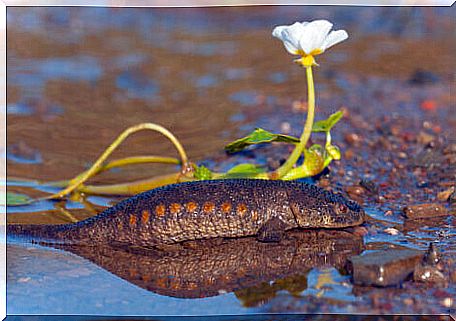
Not having large claws or powerful muscles to flee, amphibians had to invent other ways to avoid predation. Did you know of a defense method as unique as the protruding ribs salamander?


